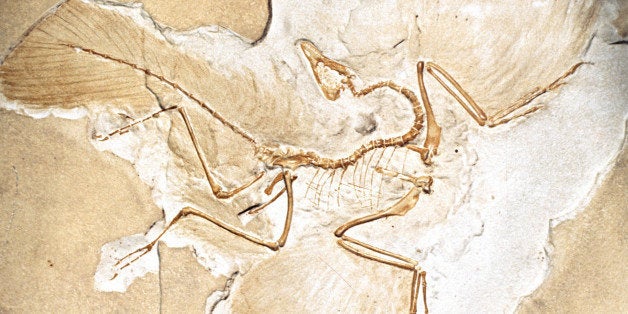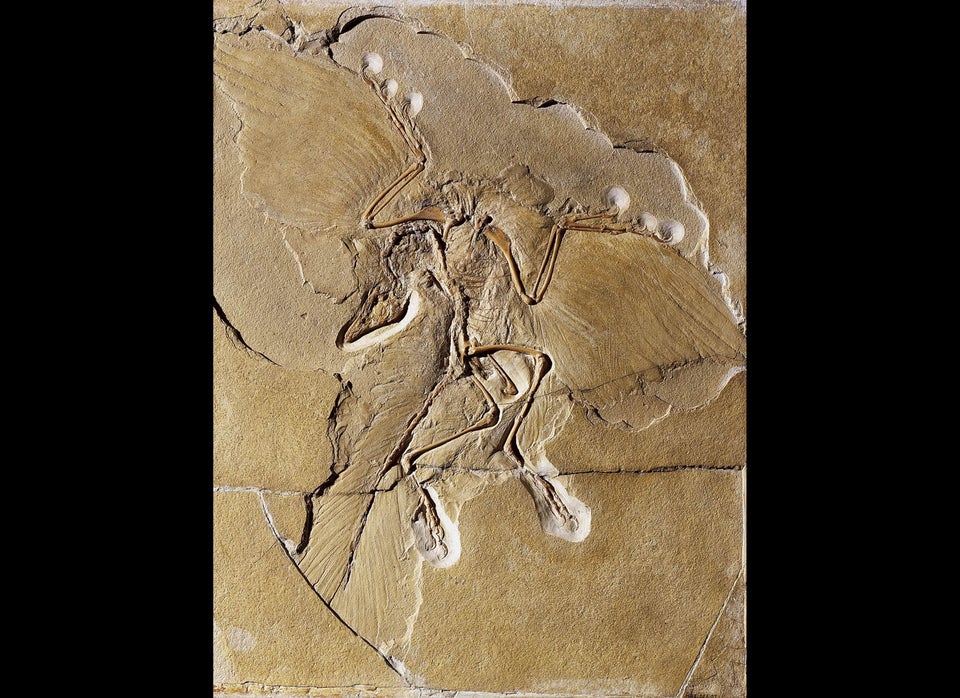
How did the first prehistoric birds get their wings -- and when?
McGill University paleontologist Hans Larsson thinks he might have answers to these fascinating evolutionary questions. He's the lead author of a new fossil study showing that small carnivorous dinosaurs called maniraptoran theropods experienced a dramatic change in the way their limbs grew in relation to the rest of their body.
The study suggests that a lengthening of the theropods' forelimbs around 150 million years ago allowed the limbs to serve as airfoils, which in turn may have eventually enabled the first birds to take off and start to fly. Longer forelimbs were most likely coupled with a shortening of the hind legs, reducing drag and making it easier for the birds to perch on tree branches.
“Our findings suggest that the limb lengths of birds had to be dissociated from general body size before they could radiate so successfully," Larsson's collaborator Alexander Dececchi said in a written statement. "It may be that this fact is what allowed them to become more than just another lineage of maniraptorans and led them to expand to the wide range of limb shapes and sizes present in today’s birds.”
Larsson chairs the university's department of vertebrate paleontology. Dececchi, a former McGill graduate student, is now a postdoctoral researcher at the University of South Dakota.
Their study isn't the first to look at the origins of flight in prehistoric birds. But a lack of information made it difficult to reach the sorts of conclusions regarding limb lengthening found in the new study, Larsson told The Huffington Post in an email.
"Over the past half decade, there have been a huge number of near-bird and early bird discoveries from around the world, but mostly in China, and these new fossils now allow us to ask these more quantitative questions," Larsson wrote. "I think our results are accurate because we used a comprehensive set of data (from nearly everything we know of the fossil record) and applied current [statistical] methods."
Larsson likened the apparent change in the ratio of limb length to body length to the "kinds of uncouplings of limb size to body size now known to have happened in bats, whales and Great Apes," he told HuffPost Science.
Larsson's research is consistent with current scientific thought regarding the evolutionary timeline of birds. His most recent findings dovetail with previous research in which he examined competing theories about early bird flight.
The first theory holds that birds began to fly "from the trees down" essentially by gliding. The second holds that birds began on the ground and eventually flapped, hopped, and ran their way into the trees. Larsson ascribes to the latter theory, which is known as "the ground-up theory."
"We found conclusive evidence that bird ancestors were not arboreal, rejecting the 'trees down' hypothesis," Larsson told Northeast Public Radio Station WAMC in April. "In fact, the limb anatomies at the origin of birds ... is most like those of running mammals and birds today, like horses and ostriches. Better understanding of the ecology of the origin of bird flight helps refine evolutionary hypotheses for their unique flight mechanics."
